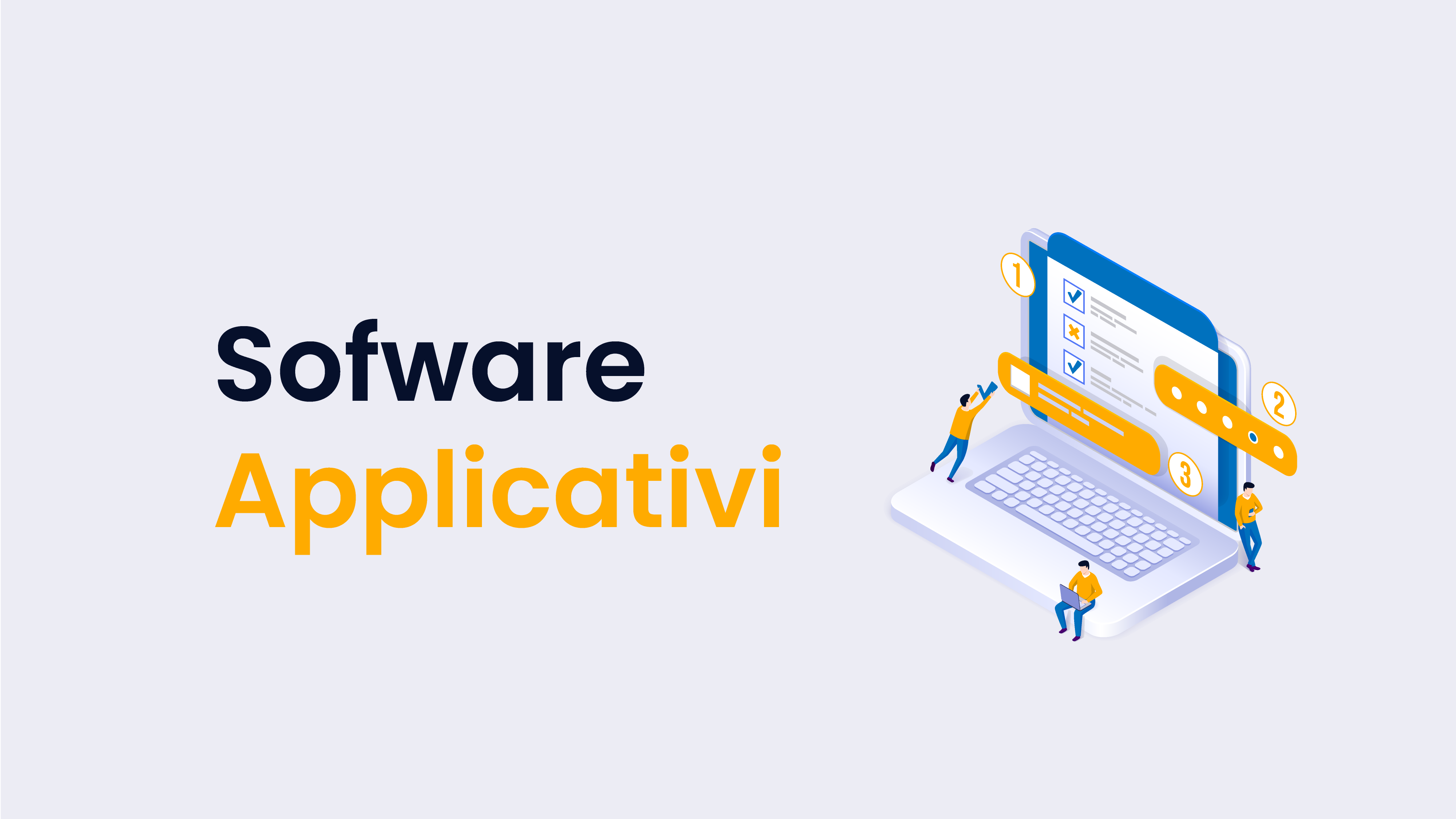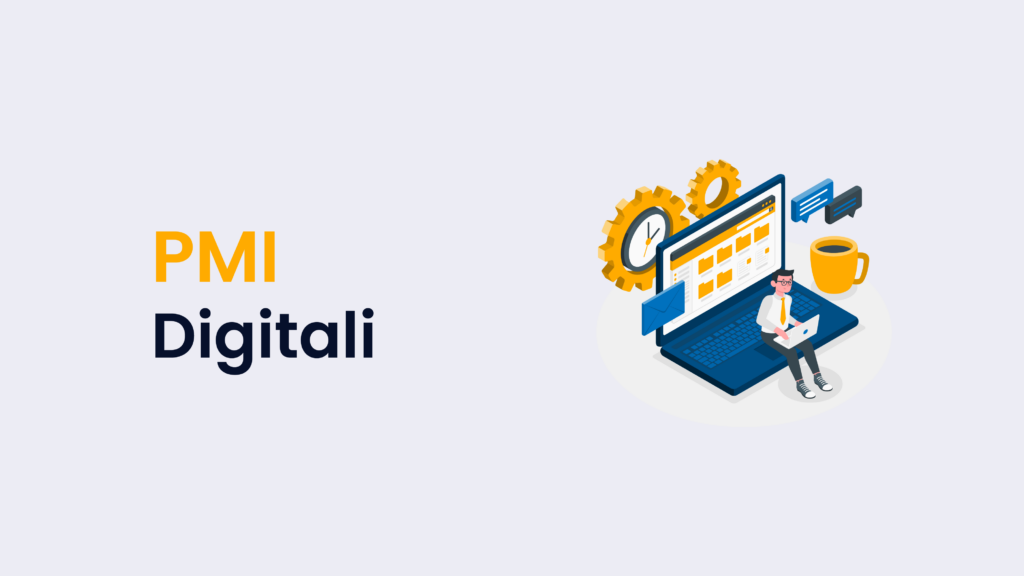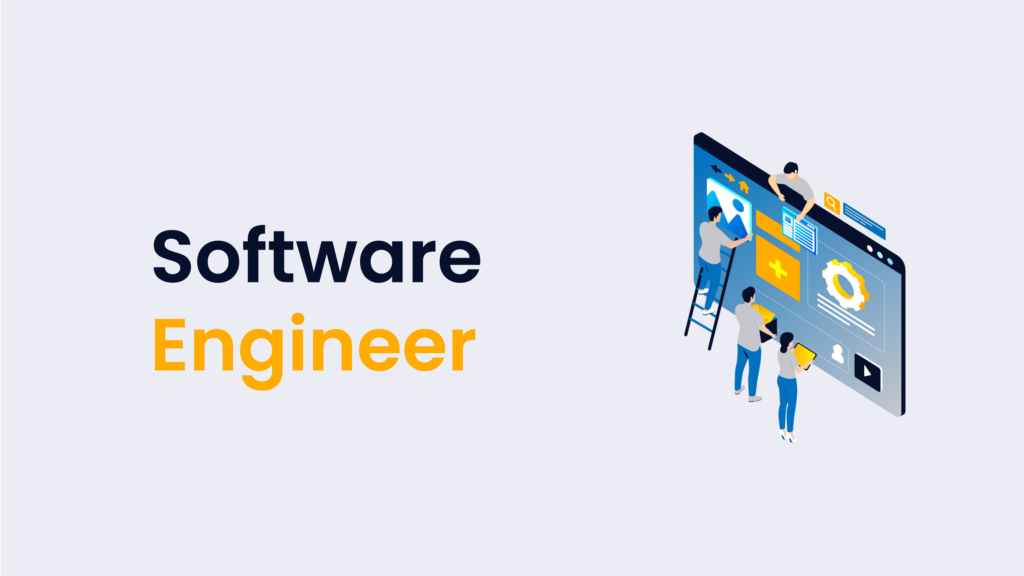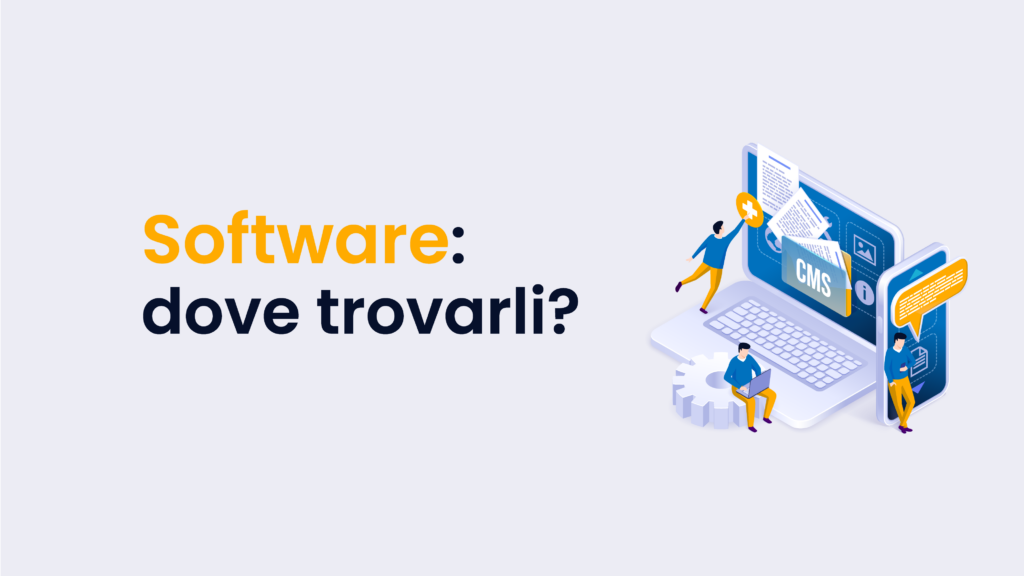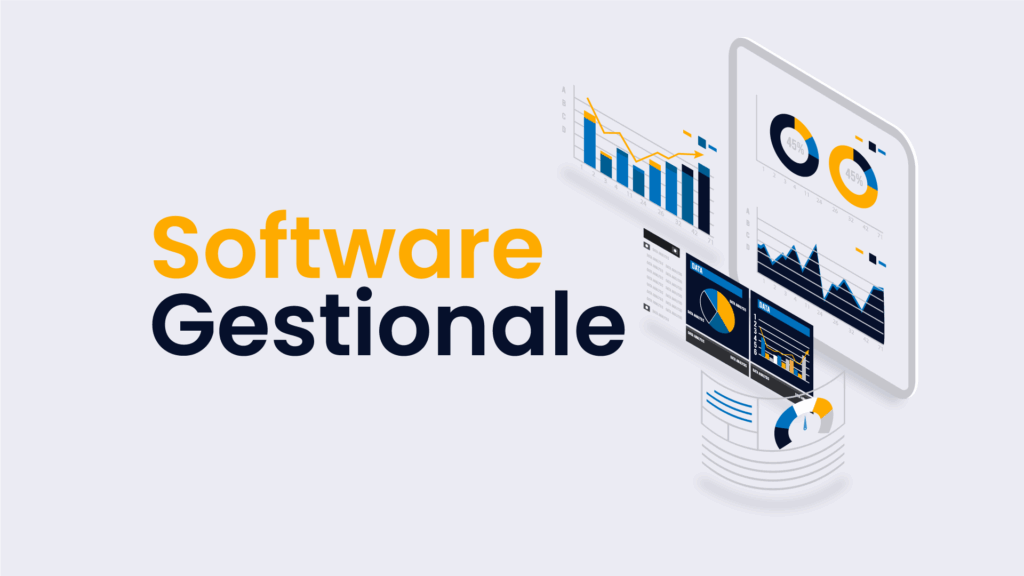I software applicativi, cioè le applicazioni, sono programmi deputati a eseguire compiti specifici e a facilitare operazioni attraverso l’automazione.
Risparmio di tempo, risorse, energie e compiere azioni altrimenti impossibili, sono i vantaggi fondamentali di questi programmi che oggi possiamo tutti apprezzare. Perciò sono diventati più che necessari a qualsiasi azienda e ai liberi professionisti che operano sul web, a diverse attività commerciali e alle istituzioni sia amministrative che scientifiche.
Ma anche alle persone non addette ai lavori, che hanno fatto dei software applicativi immancabili compagni di viaggio.
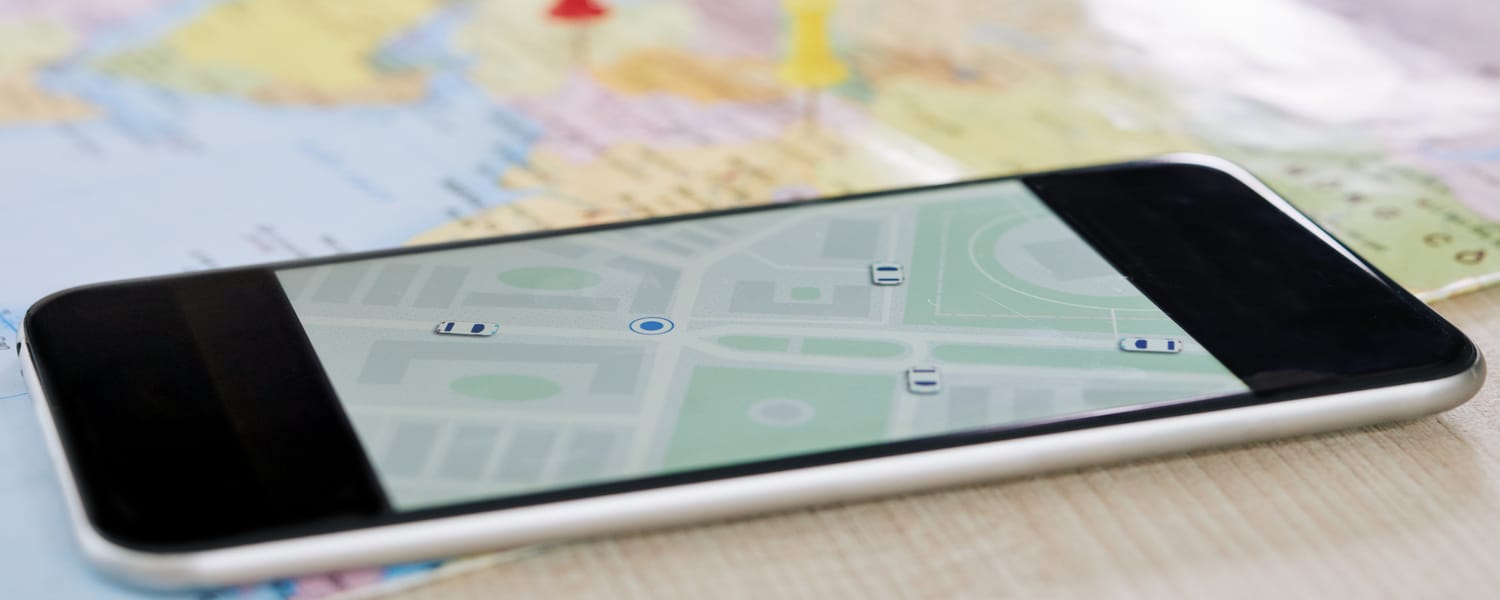
Infatti le attuali frontiere che da una decina d’anni abbiamo raggiunto sono l’accessibilità, la personalizzazione, e di conseguenza la possibilità di creare altri software applicativi con una relativa facilità. Senza considerare che molte applicazioni sono condivise su cloud e utilizzabili anche gratuitamente. Inoltre, lo sviluppo di alcuni software applicativi ha avuto un impatto indelebile sull’industria dell’intrattenimento.
Mentre si prospetta un utilizzo sempre più accessibile e fruibile di applicazioni basate su IA e realtà aumentata, sia a scopi ludici che lavorativi che culturali, andiamo a ripercorrere le tappe e i salti che ci sono stati negli ultimi 70 anni.
Indice dei contenuti
Gli albori dei Software Applicativi
Negli anni ’50 e ’60, l’industria informatica stava facendo i suoi primi passi. In questo periodo, i programmi erano principalmente concentrati su calcoli scientifici e operazioni aziendali. Si tratta dell’epoca dei pionieri della programmazione, dove le prime applicazioni erano codificate manualmente, spesso utilizzando linguaggi di base come l’assembly.
La complessità e i costi associati all’uso dei computer li rendevano accessibili soltanto ad aziende importanti e a istituzioni di ricerca.
Un esempio di innovazione di quel periodo è FORTRAN, sviluppato da IBM. Si tratta di uno dei primi linguaggi di programmazione ad alto livello, progettato per applicazioni scientifiche e ingegneristiche.
Arrivano i PC
Con l’avvento dei personal computer nella fine degli anni ’70 e inizio degli anni ’80, i software applicativi iniziarono ad essere accessibili a un pubblico molto più ampio. Questo periodo vide la nascita di software di produttività che hanno cambiato il modo in cui lavoriamo.
Suite come Microsoft Office hanno introdotto strumenti come la creazione e gestione di documenti, fogli di calcolo e presentazioni. VisiCalc, per esempio, il primo foglio di calcolo commerciale, trasformò i PC da semplici hobby per entusiasti a strumenti indispensabili per le aziende.
Il boom dei Software Applicativi grafici
Le interfacce grafiche, che emersero in questo periodo, aprirono la porta a applicazioni più intuitive e potenti. La grafica e la creatività divennero settori in cui il software giocava un ruolo centrale.
Adobe Photoshop, lanciato nel 1988, è un esempio perfetto di come questi strumenti hanno rivoluzionato interi settori. Questo software ha offerto a professionisti della grafica, designer e fotografi possibilità prima impensabili nel campo della manipolazione delle immagini.
L’avvento di Internet
L’arrivo di Internet ha ridefinito il panorama dei software applicativi. Il web ha portato alla creazione di nuovi strumenti come browser e client di posta elettronica. Le aziende iniziarono a spostare le loro soluzioni software sul web, permettendo un accesso più semplice e una collaborazione più fluida.
Netscape Navigator, uno dei primi browser web commerciali, simboleggia questa transizione e l’importanza crescente della connettività nella vita quotidiana.
Software Applicativi per smartphone: la rivoluzione della comunicazione
Il nuovo millennio ha visto la rivoluzione degli smartphone. Questi dispositivi portatili hanno trasformato il modo in cui interagiamo con i software applicativi. Nascono le app: un concetto diventato ubiquo, con soluzioni per ogni possibile esigenza, dalla salute all’istruzione all’intrattenimento.
WhatsApp, è una delle molte applicazioni che ha cambiato il modo in cui comunichiamo.
IA, realtà aumentata, machine learning, realtà virtuale
L’ultima frontiera dei Software Applicativi è rappresentata dall’arrivo e dalla crescente accessibilità dell’intelligenza artificiale, dei sistemi di machine learning,. Queste tecnologie hanno portato alla creazione di assistenti virtuali, traduttori automatici e sistemi di raccomandazione personalizzati. Parallelamente, la realtà virtuale e la realtà aumentata hanno iniziato a offrire esperienze sempre più immersive.
Pokémon Go, per esempio, ha combinato il mondo reale e virtuale attraverso la realtà aumentata, mostrando il potenziale di queste tecnologie.
Vuoi sapere di più sui Software Applicativi?

Oggi ti abbiamo offerto una storia. Abbiamo compiuto un percorso dove si sono toccate le tappe principali dell’evoluzione dei software applicativi. Queste tappe sono le pietre miliari che hanno innescato lo sviluppo, l’utilizzo e l’accessibilità di una gamma vastissima di applicazioni.
Abbiamo fatto degli esempi, ma puoi trovarne altri nel nostro articolo dedicato a dove trovare i software. Avrai anche delle brevi descrizioni sugli utilizzi, sugli scopi e sui vantaggi principali che possono concedere.
Se invece stai pesando a utilizzi specifici per aziende, negozi e altre attività commerciali, consulta il nostro articolo sui software gestionali.
Infine, se hai un’idea di software applicativo che vorresti realizzare per utilizzi personalizzati sia per te che per il tuo team di lavoro, puoi contattarci, richiederci una consulenza o commissionarci direttamente la creazione della tua applicazione.
Una volta che ti avremo consegnato il prodotto, ne avrai tutti i diritti… perciò potrebbe anche essere un’interessante idea di business.
